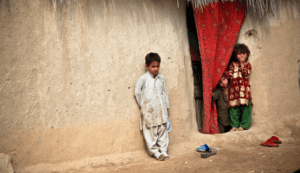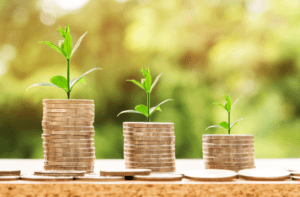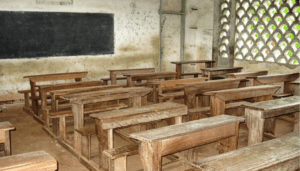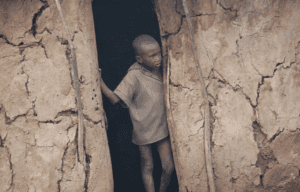Around the world poverty affects billions of children in various ways. UNICEF and the UN believe that poverty and child poverty need to be redefined to encompass the radically diverse nature of all their forms.
Contrasting experiences of child poverty
The United Nations’ Development Plan (UNDP) has for the first time included deprivation profiles within the 2022 Multidimensional Poverty Index (MPI). One surprising observation is that poverty profiles vary a good deal from region to region.
The benefit of generating deprivation profiles
Monitoring poverty helps to define more clearly how it affects people, and that insight helps to inform progress towards fulfilling the UN’s Sustainable Development Goals (SDGs) to tackle and eradicate poverty by 2030.
How many people live in poverty?
The UNDP and the Oxford Poverty and Human Development Initiative (OPHDI) estimate that approximately 1.2 billion people from 111 countries live in multidimensional poverty (MPI 2022). About 50% of that figure are children.
Poverty manifests itself in contrasting ways
In a south Asian country such as Bangladesh a person who can be classified as living in abject poverty might be lacking decent nutrition, adequate sanitation, sound accommodation and fuel for heating and cooking. However, in a sub-Saharan country like Malawi, a multidimensionally poor person is also likely to be lacking local access to a reliable, safe water supply, and a reliable electricity supply.
This means that everyday life for these two people would feel quite different. For example, a lot of time and effort needs to be invested in collecting and carrying water for many people in sub-Saharan Africa, and without electricity life revolves around traditional ways of doing things like cooking, communicating, and approaching day to day routines. Children’s lives would therefore be quite contrasting.
 The financial crisis continues to impact communities in developing countries
The financial crisis continues to impact communities in developing countries
Essentially, governments are grappling with overburdened budgets, and cuts in spending will inevitably hit poor families in terms of medical facilities, educational programmes and social support. The UNDP has issued a gloomy forecast regarding 54 countries which are heavily overspent and indebted. Inevitably the populations of those 54 countries comprise more than half of the world’s poorest people. Overall, however, they make up only three percent of the global economy.
The UNDP is urging debt relief, restructuring and urgent action to reduce cripplingly high interest rate repayments on the loans which developing nations face. Otherwise, programmes to address pressing issues like the impact of climate change are likely to be abandoned and people, especially children, will suffer further hardship as services to their communities are pruned back.
 How the UNDP calculates these data
How the UNDP calculates these data
The UNDP looks beyond household income and national GDP to arrive at these figures. It assesses the impact on people of basic services affecting health, wellbeing and education, alongside a living standards assessment. To draw its conclusions, the UNDP employs ten indicative descriptors such as access to adequate nutrition, decent sanitation, clean water and access to six consecutive years of school age education. Anyone who is judged to be deprived under the definitions of more than three of these descriptors is classified as multidimensionally poor.
How many people are included in the UNDP’s research?
The calculations include over six billion people from 111 countries. That amounts to about 92% of the total population of the developing world. Of the 6.1 billion, 19.1% are considered to be multidimensionally poor.
Many families experience undernourishment
The UNDP estimates that 682 million people live in a family with at least one undernourished person. The majority of these people are children.
Children in education
The UNDP calculates that 595 million people live in a family in which nobody has been able to undertake six consecutive years in education.
Many educational programmes are obliged to charge a fee for their services. The world’s poorest people cannot afford to send their children to a school where a fee is charged. Moreover, many children are also employed from a young age in a family business, for example, helping to run a smallholding, or helping with care duties for elderly relatives or younger siblings. Hence many children drop out of school.
 Additional descriptors used to assess general living standards
Additional descriptors used to assess general living standards
The UNDP also employs these descriptors to help define peoples’ living standards:
- Personal assets
- Access to supplies of safe cooking fuel
- Local access to clean water
- Decent sanitation
- Electricity supply
- Safe housing or accommodation
The importance of cooking fuel
Approximately ten percent of the world’s population is exposed to risks associated with solid and unsafe cooking fuels. Wood and charcoal are still used for cooking by at least 850 million people. Given the huge rises in the cost of gas and electricity it is likely that more people will have switched to solid fuels.
Solid fuels are riskier than the alternatives
Indoor fumes and pollution from cooking can take a toll on people’s health, especially young children and the elderly, and for people who rely on solid fuels there is an increased fire risk.
Where do the world’s multidimensionally poor people live?
There are 579 million people living in sub-Saharan Africa whom the UNDP classifies as multidimensionally poor. That is over 50% of the global total. In southeast Asia there are a further 385 million (about a third of the global total). These two regions are home to approximately 83% of the world’s multidimensionally poor people. Over 50% are children.
 The prominence of sub-Saharan Africa
The prominence of sub-Saharan Africa
This is down to dramatic changes in India’s demographic during the past fifteen years. Estimates suggest that 415 million people have lifted themselves out of multidimensional poverty in India since 2008. Hearteningly, the most marked changes were among what used to be the poorest cultural groups, including children, people belonging to lower castes, and people who live in rural parts of the country. This means that at present sub-Saharan Africa appears to be more prominent in terms of multidimensional poverty.
Where are the others?
Latin America and the Caribbean: 37 million
Arabian states: 51 million
Europe and central Asia: 1 million
East Asia and the Pacific rim: 109 million
Differences in multidimensional poverty levels within these regions and countries
Approximately 83% of the world’s poorest people live in rural areas. From the 111 nations assessed within the UNDP, 198 million live in cities whereas 964 million live in rural areas.
Within these numbers there is a particularly grim figure revealing that 593 million of the people classified as multidimensionally poor are children. On the global stage that means that about one in every seven adults and one in every three children are multidimensionally poor.
The global pandemic has reversed improvements
It is thought that the pandemic has reversed improvements in the battle against multidimensional poverty. This is because people who have limited or no access to decent nutrition and sanitation are more at risk from infectious diseases. And 470 million people are at present classified as being deprived of decent sanitation and nutrition.
 The main recommendations from the UNDP’s research
The main recommendations from the UNDP’s research
Multidimensionally poor people tend to be deprived of several basic elements at once, for example, adequate nutrition, cooking fuel, decent sanitation and safe accommodation. This type of analysis suggests that relief programmes should be focussed on addressing poverty-related issues in an overarching, integrated manner, tackling these areas together.
By analysing factors like the UNDP’s multidimensional poverty descriptors, and how people in different age groups are especially affected – particularly children – policymakers can be offered useful insights when formulating action plans and specific intervention.
Conclusion
The UNDP report concludes: ‘Leaving no one behind means equality of opportunity and access. It means investing in women and girls, youth and the most vulnerable people. It involves mobilizing local action and commitment towards one common goal: a better future for all.’






